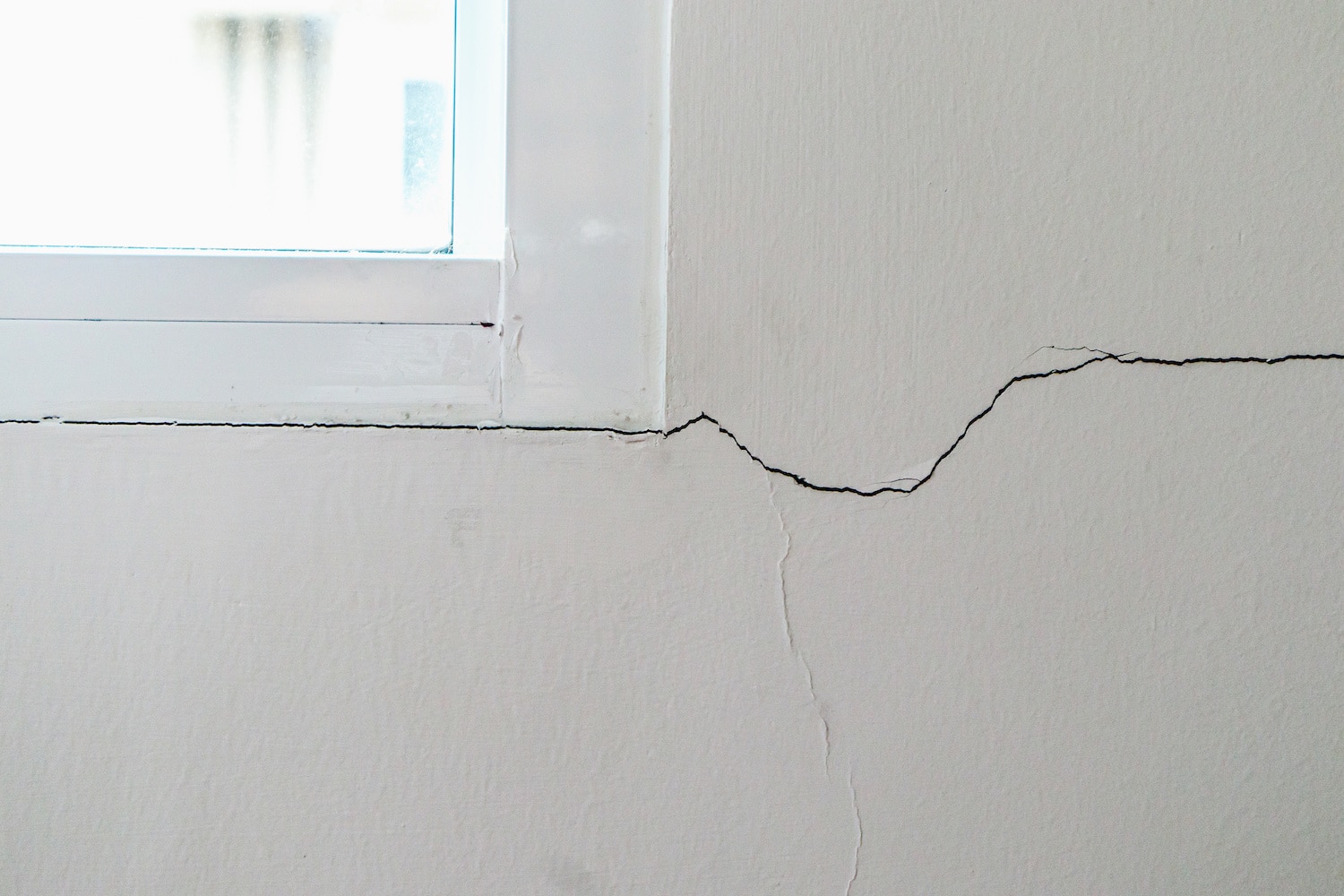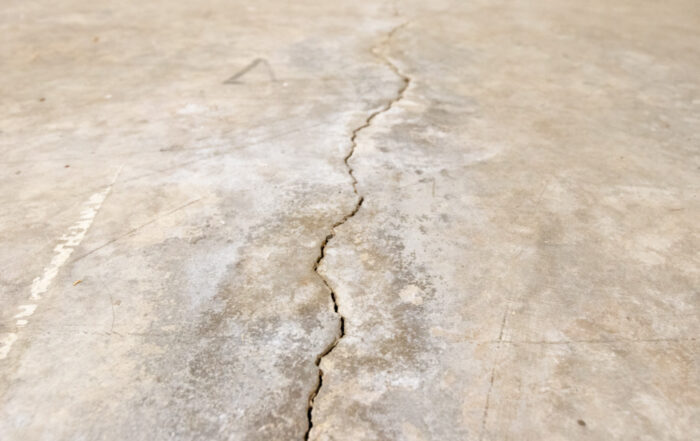DIY Foundation Repair: A How-To Guide for Homeowners

While we don’t condone homeowners doing their foundation repairs, being knowledgeable about DIY foundation repair can help you determine when you can fix a little crack vs. when to call in the pros. Catching issues early can help prevent:
- More costly repairs 💰
- Mold growth 😷
- Failed DIY repairs 🤕
- Foundation failure 🚩
We’ll walk you through the signs of foundation problems, how to fix foundation problems yourself, and ultimately when to call a foundation repair contractor.
Signs Your Foundation Needs Repair
There are many reasons for foundation issues, including:
- Soil settlement
- Expanding and contracting of soil
- Improper drainage
- Poor installation
Unfortunately, there’s only so much you can do regarding the soil itself, but drainage can always be improved. Either way, if your foundation requires repair, it may not be a sudden instance, but rather, some minor signs will start to show. If you notice any of the following signs, they may indicate you need foundation repairs ASAP.
- Water in the basement or crawl space
- Slanted floors
- Basement wall cracks
- Bowing walls in the basement
- Cracks in your walls or ceilings
How to Fix Foundation Problems Yourself
There are a few DIY repairs homeowners can do to mitigate minor foundation settlement cracks or prevent future problems. We’ll go through a few common foundation repair jobs that you can fix on your own.
1) Hairline Fractures in a Newer Foundation
If your home was constructed in the last 1-3 years, you can expect to see some hairline fractures from naturally occurring settlement. These are going to happen and you can spot them most frequently around doors or windows or the corners of your basement walls.
And when we say hairline cracks, we truly mean a crack the width of a hair or piece of string. They’re small, but noticeable. You can definitely keep an eye on them, but they’re harmless for the most part. If you don’t like them aesthetically, you can paint over them with special masonry paint.
2) Foundation Cracks Between 1/8 and 1/4 Inch
If you notice a crack or have been monitoring a crack that starts to expand and either gets longer or gets wider (wider than an eighth of an inch), you can continue watching it and marking where you see it each time. You can obviously take photos of the crack, but an even better way to monitor basement cracks is to use tape or a pencil mark with a date to indicate where you last saw it. You can then have something to compare it to.
If you determine that the crack is stable and not expanding, you could fill it with grout or concrete crack filler or another masonry safe fill. You can easily smooth it out and sand it down to be virtually undetectable.
3) Adding Proper Drainage to Your Home’s Exterior
Drainage problems can be one of the biggest reasons for foundation issues. Your home’s foundation relies on a proper gutter system and drainage around the property to combat expansive soils around your home. Too much moisture can quickly become an issue and cause soil to shift even more, leaving your foundation at risk of cracks, pressure, sinking, and failure.
To ensure proper drainage around your home’s foundation you should have:
- Enough gutters to manage the amount of water you get via rain, snow, ice
- Downspouts placed at the lowest corner of your home to drive water away from your foundation at least 10-20 feet.
- Get a drainage pipe installed along your foundation with porous holes on top, that can help guide that water to the street and away from your home.
When to Call a Professional
While we recommend having a foundation expert handle any and all foundation repairs, we understand that some handy homeowners can manage the minor fixes we’ve laid out so far.
However, when drainage issues, large cracks, and other foundation distress pops up that is beyond a small fix— you must call a professional. Here are some signs that you need to put down the tools and pick up the phone to call Perma Pier.
Horizontal Cracks With or Without Leaks
If you have a concrete poured foundation, or just a basement in general, chances are the floor was poured and dried long before the walls. Thanks to this, it’s common for the foundation wall and concrete slab floor to not adhere or fuse correctly. This can cause horizontal cracks along the bottom where the floor meets the wall as the foundation settles.
These types of cracks can be harmless, depending on a few things. If it’s just some minor separation in the concrete, you could watch it, but it’s probably just from what we mentioned— the wall and floor not fusing properly.
However, if you notice leaks coming from the crack, or the crack is extra large and crumbling, or the horizontal crack is higher than the floor seam— you might want to raise an alarm. You’ll want to get it professionally inspected and sealed as it could be an issue associated with drainage or the home’s structure.
Any Foundation Cracks Greater Than 1/2 Inch
You can purchase concrete repair kits to fix yourself easily enough. But when a crack is a half inch or bigger, while most foundation cracks may prove to be harmless, it definitely requires a professional contractor to take a look.
Bulging Basement Walls
If your basement cracks are accompanied by bulging or bowing walls, this is a big problem. Depending on the severity, the wall could collapse one day. Fixing this requires a professional and, most likely, external support to ensure that it stays in place.
Sinking or Settling Foundation
If you notice your foundation shifting by sinking or settling, then you have a big problem. With any settlement of more than 1/4 inch, you’ll want to call a professional. If it’s less than that, you can track the progress but if it gets bigger— get an expert on the phone and in your yard.
Issues With the Foundation Footings
The whole foundation of your home rests on its footings, so if there are problems here, it will cause major issues with the foundation. It’s hard to detect these problems as most of them are underground and would require a professional for diagnosis and repair. So keep an eye out for any cracks that appear in walls or ceilings near windows and doors. This could be an early sign that the footings are shifting or settling.
Cracks That Go Different Directions (Indicating a Structural Issue)
If you notice a crack that goes vertical but then quickly moves horizontally, this is a good sign of a major structural issue. Cracks going in different directions could indicate a buckling wall or severe leaks and moisture intrusion behind your basement wall.
No matter what type of foundation repair you need, the professional team at Perma Pier is here to help with quality service and fast results.
Let the #DirtNerds Handle Your Foundation Repair
The team at Perma Pier not only fixes your foundation problems, but we look at your entire home holistically to give you a long-term solution that involves proper maintenance and prevention of future foundation problems.
We know that a foundation is only as good as the soil around it. So our #DirtNerds have done the research on your local soil types to determine the best solutions for your foundation and home. We will make sure once your foundation repairs are complete, you’re also set up for success down the line. At the first sign of a crack, reach out to our team.



